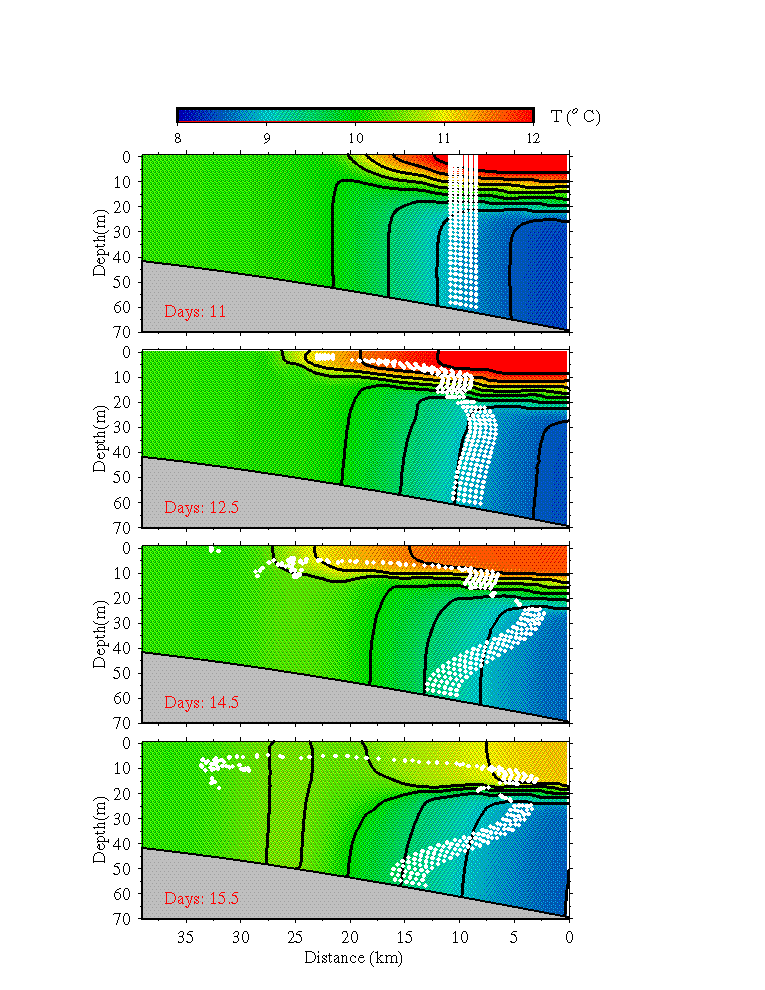A wind-induced mechanism for the cross-frontal transport over
the southern flank of Georges Bank in early summer: a 2-D
real-time modeling experiment
C. Chen, R. Schlitz, G. Lough, K. Smith, and J.P. Manning
The water exchange across tidal mixing front on the southern flank
of Georges Bank was examined using a 2-D primitive equation model.
The numerical domain featured a cross- frontal transect of the June
1999 hydrographic/ADCP survey cruise. The model was initialized
with temperature and salinity fields measured at the first
hydrographic survey on the 11th of June and run prognostically with
tidal forcing and real-time winds plus heat flux. The model results
show that the significant cross-frontal, onbank water transport
could occur in the upper 20 m as the upper part of the tidal mixing
front migrated onbank under real-time wind fluctuation
(Figure 1).
The onbank flux tended to enhance as the heat flux was added. The
fact that no or less cross-frontal water transport was found in the
cases with either tide forcing only or tide plus averaged wind
suggested that the temporal wind variation played a critical role in
the cross-frontal, onbank water transport on the southern flank in
early summer, when stratification just developed. The wind-induced
cross-frontal, onbank water transport occurred episodically with
wind fluctuation associated with atmospheric frontal passages and
also was much more significant than the tide-induced cross-frontal
water flux near the bottom. This process could be one of the
physical mechanisms responsible for the cross-frontal, onbank flux
of the copepod observed on the southern flank in early summer.

Southern
Flank Moored Water Property Summary.
